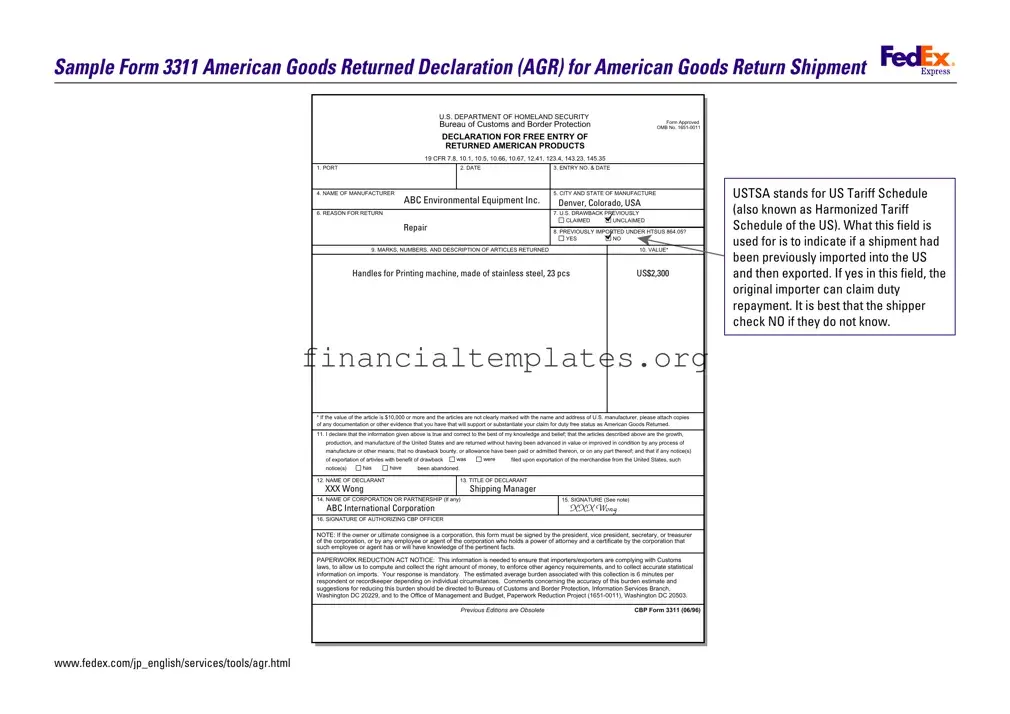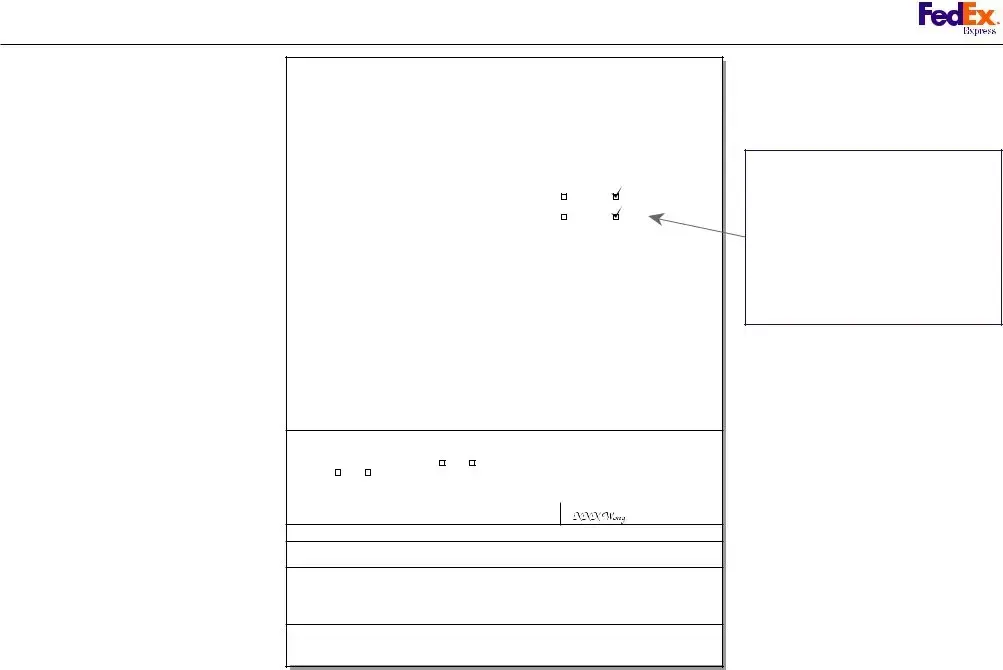The CBP Form 7501, "Entry Summary," is similar to the IRS 3311 form in that both play a crucial role in the customs clearance process for imported goods. While IRS 3311 focuses on the re-entry of American goods that were previously exported, CBP Form 7501 provides detailed information about the products being imported, including their classification, value, and the duties owed. Both forms are essential in ensuring compliance with U.S. customs regulations and facilitating accurate duty calculations.
Another comparable document is the CBP Form 3461, "Entry/Immediate Delivery," which, like the IRS 3311, is used in the importation process. The Form 3461 is typically filed for immediate release of goods upon their arrival in the United States. It's similar to IRS 3311 in that it also requires information about the imported items, but it's specifically designed for faster processing to allow urgent shipments to be delivered without delay.
The CBP Form 4455, "Certificate of Registration," shares similarities with IRS 3311 regarding American goods taken abroad that are intended for return to the United States. The 4455 form is used to register items with Customs before they leave the country, ensuring duty-free re-entry, just as IRS 3311 declares returned American products for duty-free entry. Both facilitate the movement of goods across the border by proving their eligibility for exemption from duties.
The NAFTA Certificate of Origin, another critical trade document, parallels the IRS 3311 form for products traded between NAFTA countries. Both documents are used to certify the origin of goods to qualify for preferential tariff treatment. The NAFTA Certificate specifies that the goods are eligible for duty-free or reduced tariff entry under the NAFTA agreement, similar to how IRS 3311 certifies American goods returned for duty-free entry.
The "Shipper’s Export Declaration" (SED), now known as the Electronic Export Information (EEI) filed through the Automated Export System (AES), is akin to IRS 3311 in the exportation context. While IRS 3311 deals with the re-importation of American manufactured goods, the EEI/SED records details about goods leaving the United States, including their value and destination. Both forms are crucial for compliance with U.S. export regulations and customs requirements.
The "Application and Special Permit for Immediate Delivery" (CBP Form 3461-Alternate) works in concert with forms like IRS 3311 to expedite the clearance process for certain imports. This form allows for immediate delivery of cargo prior to the completion of customs formalities, similar to how IRS 3311 expedites the re-entry of American goods by declaring their duty-free status upfront.
CBP Form 3299, "Declaration for Free Entry of Unaccompanied Articles," is similar to IRS 3311 in its objective to declare items for duty-free entry. However, Form 3299 is used for personal and household effects entering the U.S. when the owner is not physically accompanying them. Like IRS 3311, it ensures compliance with customs regulations and helps in the smooth entry of goods without the imposition of duties.
Lastly, the "Informal Entry" process bears resemblance to the streamlined customs procedure facilitated by IRS 3311 for returned American goods. Informal entries, typically for shipments valued under a certain threshold, require less documentation and processing compared to formal entries. IRS 3311 simplifies the re-importation of American goods in a similar fashion by streamlining the duty-free return process for eligible items.

